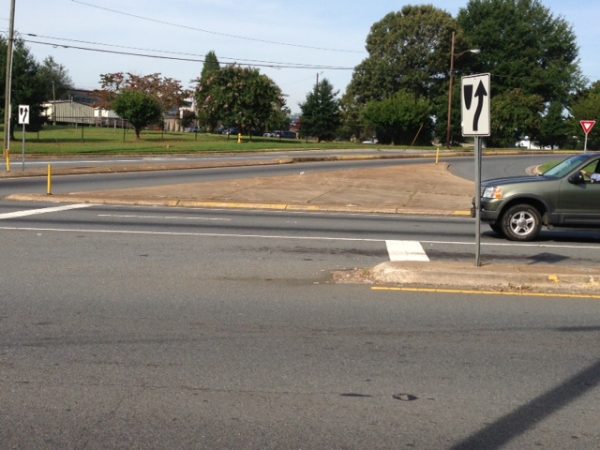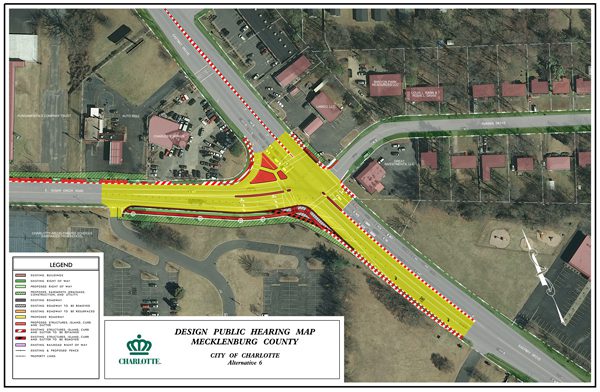City to improve safety at site of student death

Nearly 18 months after a Garinger High School student was struck by a car and killed crossing Eastway Drive at Sugar Creek Road, changes aimed at improving pedestrian safety were approved for the busy five-lane intersection.
Monday, as Charlotte-Mecklenburg Schools students returned for the first day of classes, Charlotte City Council voted unanimously to spend $750,000 to realign the intersection, add a crosswalk and make other improvements.
The N.C. Department of Transportation will contribute $400,000 to the project, which is on two state-maintained streets in front of the 1,700-student school. Today, motorists turning right from East Sugar Creek Road onto Eastway Drive merge using a free-flowing turn lane. This project will remove and re-align that lane, to slow down turning motorists. The money will also pay for crosswalks, pedestrian countdown signals and sidewalk improvements between Sugar Creek Road and The Plaza.
 On March 13, 2012, Brittany Palmer and a group of friends attempted to cross Eastway Drive heading back to the school for an afternoon softball game, after visiting a restaurant. Palmer, an 18-year-old senior, was struck by a 1996 Jeep Grand Cherokee in the far right merging lane. She died in the hospital the next morning. The 54-year-old driver of the SUV was not charged.
On March 13, 2012, Brittany Palmer and a group of friends attempted to cross Eastway Drive heading back to the school for an afternoon softball game, after visiting a restaurant. Palmer, an 18-year-old senior, was struck by a 1996 Jeep Grand Cherokee in the far right merging lane. She died in the hospital the next morning. The 54-year-old driver of the SUV was not charged.
After Palmer’s death, students and neighbors called for improvements to the intersection, where there are no crosswalks or pedestrian signals and sidewalks are incomplete. On March 26, 2012, Charlotte City Council approved moving $250,000 from a project on Statesville Avenue to improve sidewalks near the intersection.
Since 2008, 62 car wrecks have occurred at the intersection and three pedestrians, including Palmer, have been struck at the intersection. The other two pedestrians, one of whom was also a Garinger student, survived.
Construction on the $1.15 million project, in planning and design since July 2012, is scheduled to begin in October 2014. The city hopes to speed up the project so construction can begin during summer 2014, while school is out of session.
Whether they’re able to move up the schedule depends on several factors, including moving utility lines, purchasing right of way and the construction bidding process, said Linda Durrett, Charlotte Department of Transportation spokesperson.
“There is much that needs to happen before the first shovel of dirt is turned,” Durrett said in an email.
The interchange’s current alignment, including the free-flowing turn lane, was designed and constructed around 1970, according to CDOT officials. It was a time when planners and traffic engineers focused on moving vehicles quickly and made few plans for pedestrians or bicyclists.